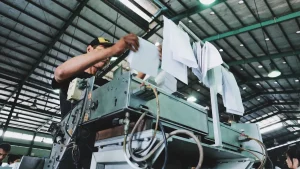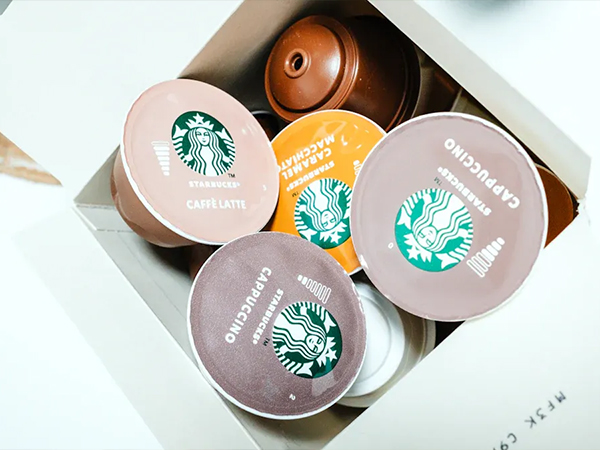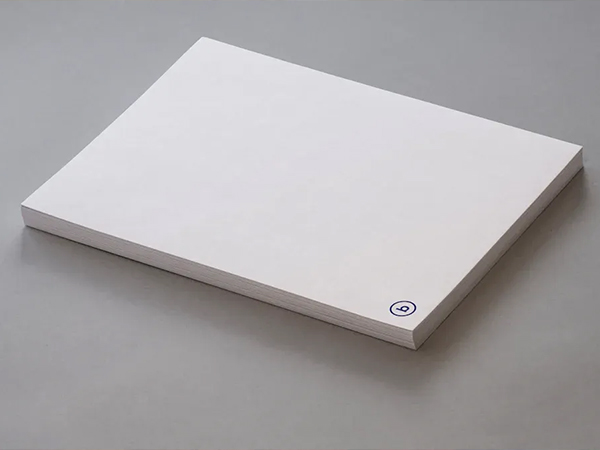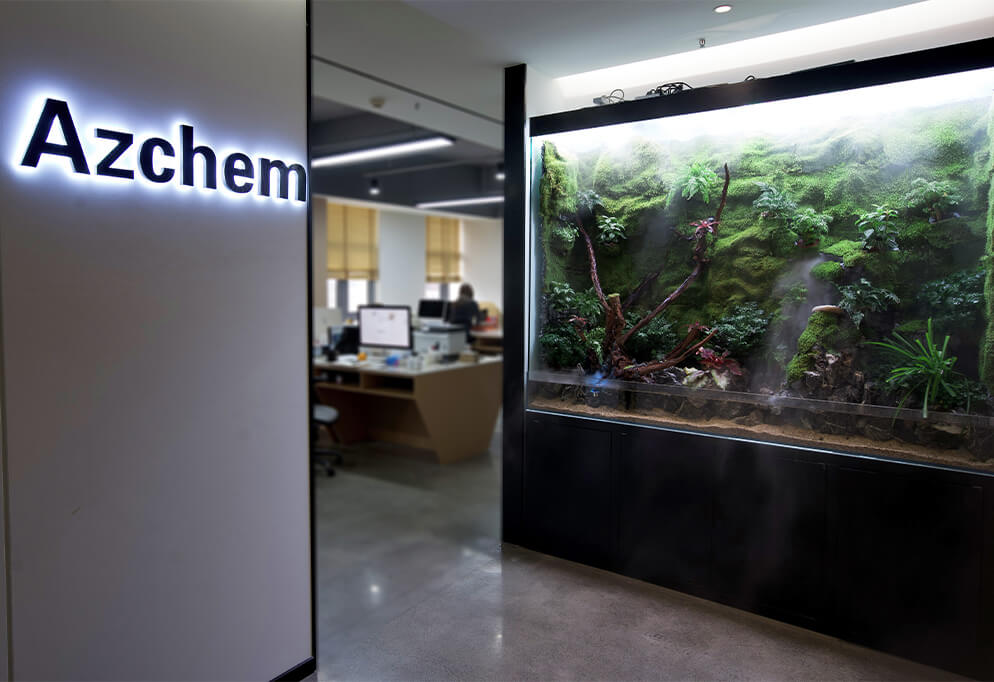
You rely on paper that performs well in every application, and surface sizing matters because it transforms ordinary sheets into high-quality products. Surface sizing improves printability, keeps ink clear, and enhances the surface glaze. You gain stronger paper that resists tearing and compression. Water protection increases as surface sizing forms a barrier against moisture. Environmentally, starch-based agents offer biodegradable solutions and lower carbon emissions compared to synthetic alternatives.
| Aspect | Impact |
|---|---|
| Printability | Maintains ink clarity and surface glaze, improving overall print quality. |
| Durability | Increases tensile and compression strength, allowing paper to withstand greater forces. |
| Water Resistance | Creates a protective barrier that reduces absorption and enhances water resistance. |
| Environmental Sustainability | Starch-based agents are biodegradable and produce lower carbon emissions than synthetics. |
Introduction: The Importance of Surface Sizing
Role of sizing in papermaking
You encounter sizing at the heart of every papermaking process. Sizing controls how your paper interacts with liquids, which directly affects its performance in printing, writing, and packaging. When you apply sizing, you reduce the paper’s tendency to absorb liquids. This means inks and paints stay on the surface, giving you crisp lines and vibrant colors. You also gain a consistent and precise surface, which is essential for high-quality printing and writing.
Sizing does more than just manage absorbency. It shapes the texture, character, and appearance of your paper. You notice improved resistance to soil, grease, and stains, which keeps your products looking clean and professional. Sizing even alters reflectance properties, helping you achieve the exact look you want for your finished sheets.
Here’s what sizing brings to your papermaking process:
- Reduces unwanted liquid absorption
- Provides a uniform surface for printing and writing
- Enhances smoothness and surface bond strength
- Controls absorptive capacity for better performance
- Improves resistance to stains and grease
Difference between internal and surface sizing
You have two main approaches to sizing: internal and surface. Internal sizing gets added during the initial paper formation, while surface sizing is applied after the sheet forms. Each method delivers unique benefits, and understanding the difference helps you choose the right solution for your needs.
| Aspect | Internal Sizing | Surface Sizing |
|---|---|---|
| Application | Incorporated into the paper furnish during production | Applied onto the surface after paper formation |
| Mechanism | Forms a film around fibers, enhancing resistance to liquids | Creates a protective layer on the surface |
| Effectiveness | More effective in preventing ink feathering and bleeding | Enhances water repellency and print quality |
| Print Quality | Improves printability and resistance to smudging | Improves ink holdout and durability |
| Best Use | Ideal for porous papers like newsprint | Suitable for enhancing specific surface properties |
Surface Sizing Matters because it lets you fine-tune the final properties of your paper. You can boost water repellency, improve ink holdout, and increase durability—all after the sheet forms. This flexibility gives you an edge in producing paper that meets modern demands for quality and performance.
How Surface Sizing Agents Work

Mechanism of film formation on fiber surface
You rely on surface sizing agents to create a protective film on paper fibers. This film formation process starts when you apply agents like starch, polyvinyl alcohol, or cellulose derivatives to the paper surface. The agents spread evenly, forming a thin layer that bonds with the cellulose fibers. You notice that starch, in particular, increases paper stiffness and reduces porosity, which lowers water absorption rates. The charge of particles in the sizing mixture also plays a role. When you mix stabilizers with starch, the particle charge influences how well the film forms and adheres to the fibers.
Temperature control is critical during application and drying. Raising the temperature improves sizing efficiency, especially as you approach the glass transition temperature of the polymer. Aggregation of hydrophobic particles with starch further reduces water uptake, making your paper more resistant to moisture. You select raw materials based on the desired properties. For example, β-amylase-modified starch boosts puncture strength, while polyvinyl alcohol enhances water resistance and smoothness.
Tip: You can refer to the table below to compare how different raw materials affect paper properties.
| Raw Material | Effects on Paper Properties |
|---|---|
| Starch and its modified derivatives | Enhances adhesion to cellulose fibers, improves puncture strength (increased by 63.6% with β-amylase-modified starch) |
| Cellulose derivatives | Contributes to surface strength and printability. |
| Polyvinyl alcohol (PVA) | Improves water resistance and surface smoothness. |
| Polyethylene terephthalate (PET) | Enhances durability and resistance to moisture. |
Interaction with fillers and coatings
You often use fillers like calcium carbonate to improve paper brightness and reduce costs. However, these fillers interact with sizing agents in complex ways. For instance, alkyl–dimercetene (AKD) may show reduced retention when combined with calcium carbonate, which can negatively impact paper properties. Increasing filler content raises the surface area, making it harder for AKD to remain effective.
Cationic starch helps you overcome these challenges by promoting better adsorption of AKD onto cellulose fibers. This improves the overall sizing effectiveness. Fillers can mechanically or chemically trap sizing agents, but you should monitor their impact on optical properties and paper strength. You achieve optimal results by balancing filler content and choosing the right sizing agent.
- AKD retention decreases with higher calcium carbonate levels.
- Cationic starch boosts AKD adsorption and sizing efficiency.
- Excess fillers may lower paper strength and optical quality.
Surface Sizing Matters because you can fine-tune these interactions, ensuring your paper meets the highest standards for printability, durability, and moisture resistance.
Key Benefits of Surface Sizing
Improved printability and ink absorption
You demand paper that delivers sharp images and clear text. Surface sizing agents help you achieve this by controlling ink absorption and improving print quality. When you apply surface sizing, you increase the paper’s surface energy and ink retention rate. Laboratory tests show that treated paper can reach ink retention rates above 90%, compared to untreated sheets. You also see improvements in printability, with some treatments boosting performance by up to 14.7%. The table below highlights these quantitative gains:
| Treatment Type | Improvement (%) | Surface Energy (mJ m−2) | Ink Retention Rate (%) |
|---|---|---|---|
| Untreated | N/A | 35.75 | N/A |
| Sizing 1 | 8.8 | N/A | >90 |
| Sizing 2 | 7.2 | N/A | >90 |
| Sizing 3 | 14.7 | 58.60 | >90 |
Tip: You can select the right sizing agent to match your printing needs and optimize ink performance.
Better water and moisture resistance
You want paper that stands up to moisture and resists water damage. Surface sizing forms a barrier that reduces water absorption and increases the dynamic water contact angle. When you use formulations with AKD and ASA, you see water vapor transmission rates drop by 35%. Polyvinyl alcohol-based treatments can lower water vapor transmission from 1547 to just 104 g m−2 d−1. The following table summarizes these improvements:
| Treatment | Dynamic Water Contact Angle (°) | WVTR Reduction (g m−2 d−1) |
|---|---|---|
| Uncoated Paper | N/A | 1547 |
| AKD (0.25 wt.%) + ASA (0.75 wt.%) | 112–121 | Reduced by 35% |
| Formulations with PVA (4%) | N/A | Reduced from 1547 to 104 |
Note: Enhanced water resistance helps you produce packaging and specialty papers that perform reliably in humid environments.
Enhanced surface strength and durability
You expect your paper to withstand handling, folding, and printing processes. Surface sizing materials such as starch, hydroxyethyl starch, and polyvinyl alcohol bond surface fibers and seal capillaries. This mechanism boosts surface strength and durability. Studies show that enzyme-modified starch can increase surface strength by 119.8% and tensile strength by 40.1%. You benefit from a sheet that resists tearing and maintains integrity during use.
| Evidence Description | Details |
|---|---|
| Surface Sizing Materials | Starch, hydroxyethyl starch, carboxymethyl cellulose, polyvinyl alcohol, methyl cellulose, alginates, wax emulsions, and nonpolar synthetic polymers are used for surface sizing. |
| Function of Surface Sizing | Improves water resistance and bonds surface fibers, enhancing printing properties. |
| Mechanism | Seals the sheet by filling capillaries and pores, reducing water absorption by capillary action. |
- Starch-based sizing agents offer cost-effective solutions for boosting surface strength and printability.
- You meet growing demand for biodegradable products by choosing natural agents.
- Enzyme-modified starches deliver superior viscosity stability and improved paper properties.
Surface Sizing Matters because you gain control over print quality, moisture resistance, and durability. You deliver paper that meets the highest standards for performance and sustainability.
Applications in Different Paper Grades

Printing and writing papers
You rely on printing and writing papers for everyday communication, publishing, and office use. Surface sizing plays a critical role in these grades by sealing surface fibers and increasing sheet strength. You notice reduced fuzz and enhanced water repellency, which leads to improved print quality and resistance to fluids. Surface sizing also decreases blanket piling and boosts surface smoothness, making your paper ideal for high-speed printing.
| Application of Surface Sizing | Performance Metrics |
|---|---|
| Sealing surface fibers | Ink absorption rate |
| Increasing sheet strength | Surface strength |
| Reducing fuzz | Print quality |
| Enhancing water repellency | Resistance to fluids |
| Decreasing blanket piling | Surface smoothness |
You use spectroscopic techniques, physical property testing, and chemical property testing to evaluate effectiveness. Gloss meters and smoothness testers help you monitor appearance quality. Research shows that blends of cationic starch and copolymers alter surface energetics, resulting in sharper images and better inkjet printing performance.
Packaging board
You depend on packaging board for strength and protection in shipping, food packaging, and retail displays. Surface sizing enhances barrier properties and increases durability. Different coatings improve strength and help resist moisture, oils, and gases. The processing of fiber-based substrates affects coating integrity, so you must monitor each step to maintain performance.
| Aspect | Findings |
|---|---|
| Coatings | Different coatings enhance strength and barrier properties of paperboard. |
| Processing Effects | Processing affects coating integrity and final packaging performance. |
| Sustainability | Dispersion-coated substrates can match PET barrier properties with less non-cellulosic content. |
You choose dispersion-coated substrates for sustainable packaging. These options offer barrier properties similar to PET but use less synthetic material. Surface Sizing Matters because you can deliver packaging that meets both performance and environmental standards.
Specialty papers
You encounter specialty papers in applications that demand unique properties. Metallized paper requires enhanced surface strength and printability. Currency notes need special chemical coatings for security and durability. Coffee filters and food wraps must resist oil and grease, while colored paper relies on coatings for color retention and print quality.
| Specialty Paper Product | Unique Requirements |
|---|---|
| Metallized Paper | Enhanced surface strength and printability. |
| Currency Notes | Special chemical coatings for security and durability. |
| Coffee Filters | Oil and grease resistance. |
| Colored Paper | Coatings for color retention and print quality. |
| Carbonless Copy Paper | Precise surface treatment for functionality. |
| Sack Kraft | Natural alternatives to synthetic coatings for safety. |
| Grease-Resistant Grades | Oil and grease resistance through specialized coatings. |
| Food Wrap | Safe, naturally derived coatings for health standards. |
| Fry Scoops | Coatings for grease resistance and food safety. |
| Microwave Paper | Coatings that withstand heat and maintain integrity. |
- Specialty papers require closer monitoring for quality control.
- You often need special chemical coatings tailored to each application.
- Surface inspection systems help you detect imperfections early, improving yield and quality.
Tip: You can prevent common defects such as adhesion failures, corrosion under coating, and coating inconsistencies by implementing thorough cleaning protocols and matching surface profiling to the coating type.
Amazon Chemicals’ Surface Sizing Solutions
Product highlights (cationic & anionic options)
You want reliable surface sizing agents that deliver consistent results. Amazon Chemicals offers both cationic and anionic solutions, each designed for specific paper applications. Cationic agents provide enhanced ink holdout and boost surface strength. Anionic agents create a hydrophobic barrier, improving water resistance and print quality. You can select the right product based on your paper grade and performance requirements.
| Feature | Anionic Surface Sizing Agents | Cationic Surface Sizing Agents |
|---|---|---|
| Charge | Negatively charged ions | Positively charged ions |
| Water Resistance | Creates a hydrophobic barrier to prevent water penetration | Improves resistance to moisture and mechanical stress |
| Printability | Reduces ink penetration, enhancing print quality | Enhances ink holdout and surface properties |
| Dimensional Stability | Reduces shrinkage and curling | Improves strength and durability of paper |
| Surface Smoothness | Contributes to a smoother surface for better print quality | Enhances surface properties for various paper applications |
| Applications | Used in packaging materials, labels, and high-quality printing | Used in printing, packaging, tissue, and specialty papers |
Technical support and global supply
You receive more than just products when you partner with Amazon Chemicals. The technical support team helps you optimize sizing application and troubleshoot process challenges. You gain access to expertise in the latest sizing innovations, Amazon Chemicals supplies surface sizing agents worldwide, ensuring you have consistent quality and reliable delivery.
- You can ask about market trends, product selection, and process optimization.
- The team answers common questions about market value, growth outlook, and regional trends.
- Amazon Chemicals supports you with eco-friendly solutions and AI-driven advancements.
You stay ahead in a market driven by digital transformation and sustainability. Surface Sizing Matters because you need solutions that meet evolving demands and deliver measurable improvements in paper performance.
Conclusion & CTA
You face many choices when you want to produce paper that meets modern standards. Surface sizing matters because it gives you control over print quality, durability, and moisture resistance. You see the benefits in every sheet, whether you manufacture printing paper, packaging board, or specialty grades.
You encounter challenges such as managing effluent loads, ensuring starch retention, and balancing surface strength with cost. You can overcome these by using low cationic starches, which lower chemical oxygen demand in effluents and improve self-retention rates up to 90%. You also achieve cost savings by replacing fiber with filler and reducing starch consumption by 30% without sacrificing strength. High-quality ink-jet printability becomes possible, meeting the demands of today’s market.
The future of surface sizing technologies points toward sustainability and innovation. You will see more bio-based and polymeric sizing agents as the market grows. The demand for high-quality paper and packaging will drive these advancements, helping you meet consumer preferences and regulatory standards.
Surface Sizing Matters when you want to deliver paper that stands out for quality and sustainability. You can contact Amazon Chemicals for expert support and advanced solutions. You gain access to reliable products, technical guidance, and a global supply network. Take the next step to improve your papermaking process and achieve superior results.
You recognize that surface sizing is essential for modern papermaking. Manufacturers, printers, and end-users prioritize it because you gain stronger paper, reduced dust, and improved printability. You benefit from enhanced water resistance and better ink holdout.
- Surface sizing bonds fibers, increasing surface strength.
- Adoption of bio-based, pH-neutral chemistries supports environmental goals.
- Low-VOC, water-based dispersions reduce emissions and align with circular economy principles.
Surface Sizing Matters when you seek reliable performance and sustainable solutions.
FAQ
What is the main purpose of surface sizing in papermaking?
Surface sizing improves print quality, increases water resistance, and strengthens the paper surface.
You achieve sharper images, better durability, and enhanced performance for various applications.
How do you choose between cationic and anionic sizing agents?
| Agent Type | Best Use Case |
|---|---|
| Cationic | Printing, specialty |
| Anionic | Packaging, moisture |
You select based on your paper grade and desired properties.
Can surface sizing help with eco-friendly paper production?
You support sustainability by using starch-based or bio-polymer sizing agents.
- These options reduce carbon emissions
- They offer biodegradable solutions
- You meet environmental standards
Does surface sizing affect inkjet and laser printing results?
You notice improved ink holdout and reduced smudging.
Surface sizing creates a smoother, more receptive surface for both inkjet and laser printers, ensuring crisp text and vibrant colors.






